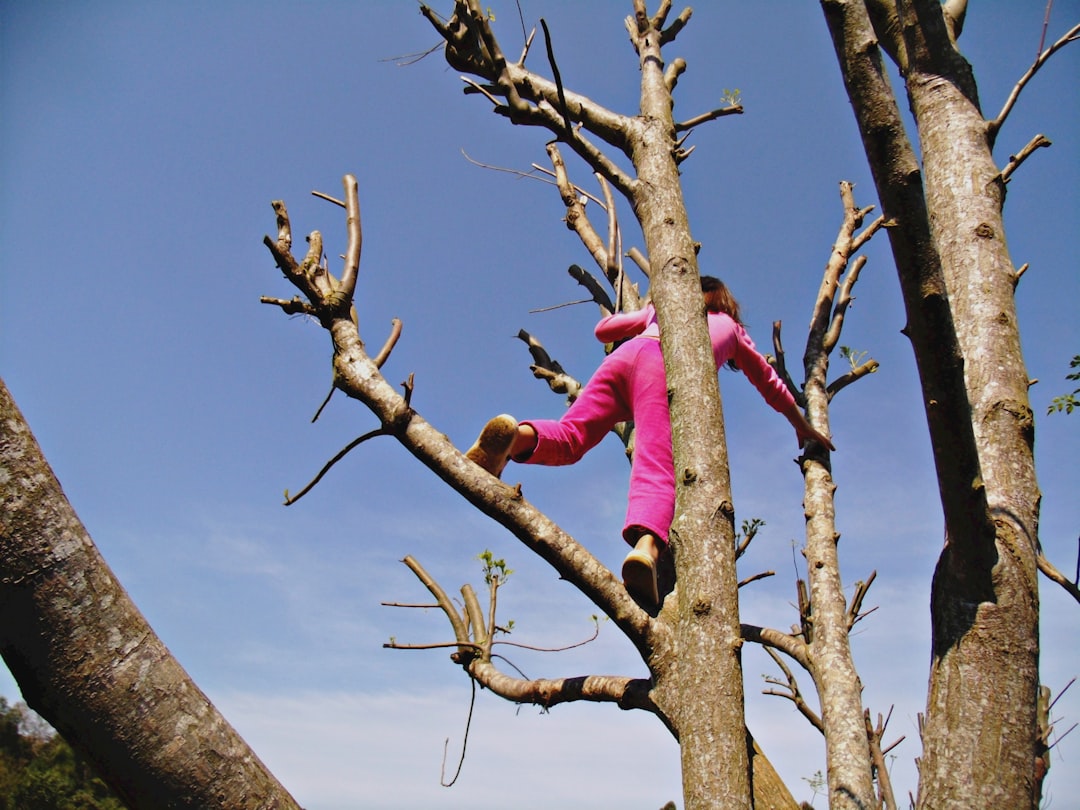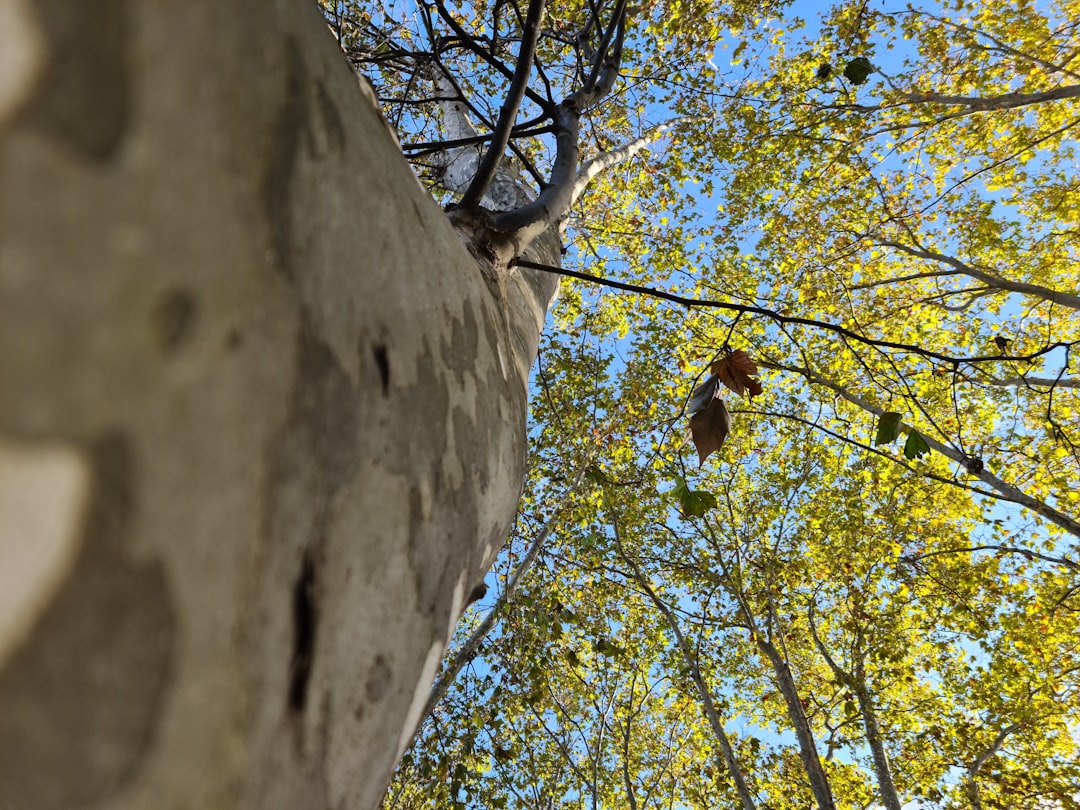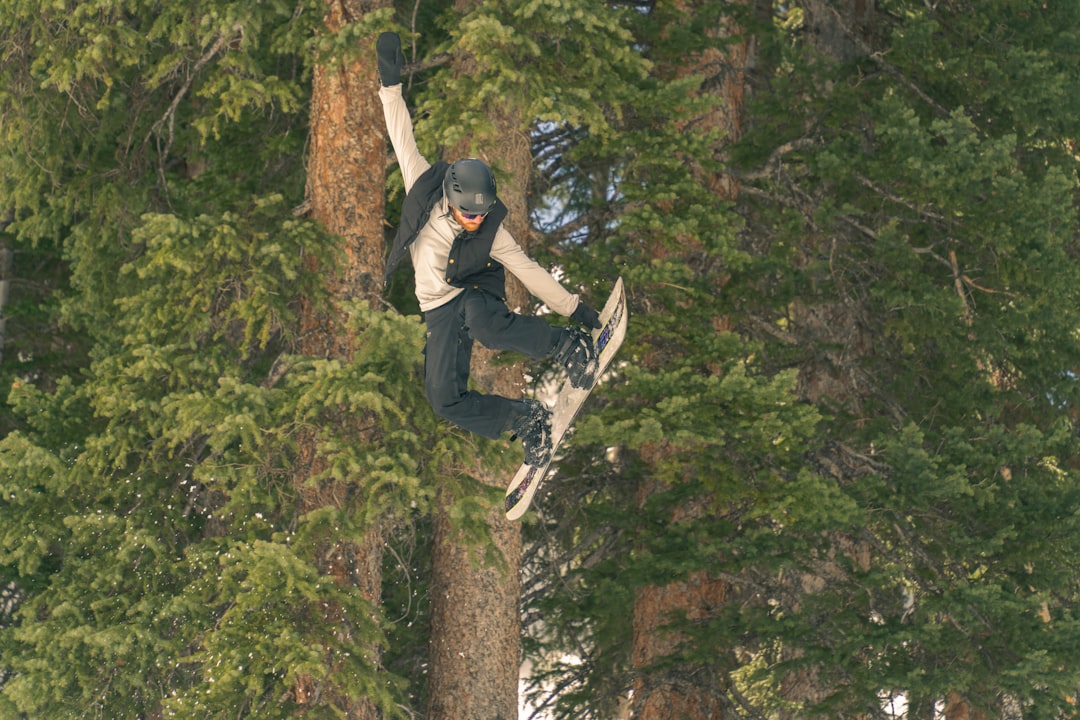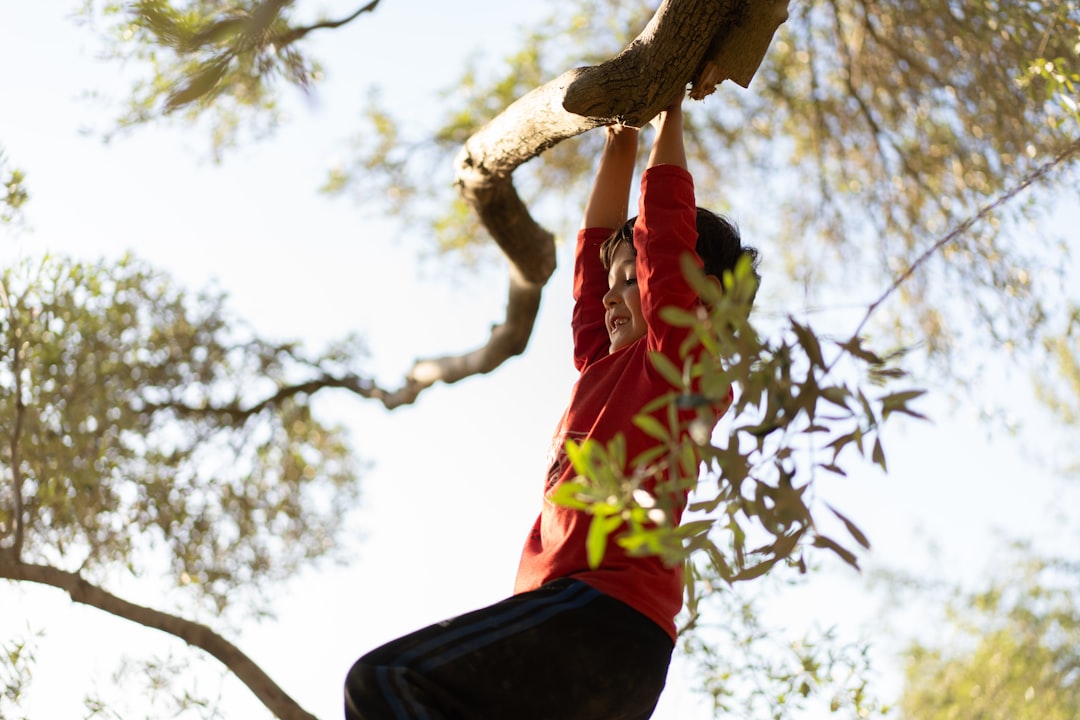

Engage prospects with a scan and streamline customer engagement with FREE QR code marketing tools by Sona – no strings attached!
Create a Free QR CodeFree consultation

No commitment

Engage prospects with a scan and streamline customer engagement with FREE QR code marketing tools by Sona – no strings attached!
Create a Free QR CodeFree consultation

No commitment
Tree climbing training programs are rapidly evolving as digital touchpoints reshape how instruction, certification, and job placement happen. Traditionally, arborist training and tree care certification relied on static brochures, in-person demonstrations, and manual recordkeeping. These analog methods made it difficult for climbers and trainers to track progress, access the latest standards, and understand which materials were actually driving action. Many programs still struggle with critical challenges: missing high-intent prospects because they are not tracked when browsing materials, not knowing which trainees are truly engaged until classes are over, and coping with paperwork that leads to errors or lost opportunities.
Professionals in tree climbing education work to overcome issues such as the lack of real-time visibility into participant progress, capturing all leads who express interest, and transitioning analog touchpoints to actionable digital experiences. For example, when prospects interact with physical guides or explore demo classes but do not sign up, programs risk missing highly motivated students simply because their data is not captured or followed up on quickly.
With powerful tools like QR codes, climbing education providers can turn every flyer or gear checklist into an entry point for interactive content, instant sign-ins, and actionable insights. QR technology automates attendance, tracks curriculum engagement, and bridges the gap between offline exploration and online follow-up. This guide details how QR codes can be embedded at every step, connecting awareness, learning moments, and measurable progress.

Tree climbing programs often face disengagement and cumbersome manual processes, particularly when trainees are required to check in, access training content, or confirm safety compliance. Without integrated systems, valuable participation data is lost, making it hard to verify who is progressing toward certification or following updated procedures. Paper sign-in sheets, printed waivers, and static manuals leave instructors guessing about who engaged and what content resonated.
A modern QR-enabled workflow addresses these problems by making every physical item a gateway to a digital action. When that gateway is trackable and flexible, your staff can measure engagement and step in with support exactly where it is needed. Instead of hoping that a trainee remembers a URL, you present a high-visibility scan target that immediately opens the right form, video, or module.
Case in point: a training program replaces clipboards for attendance with QR badges, instantly tracking participants and boosting sign-in rates by 40 percent. The team also surfaces which students consistently engage with safety resources and follow-up assignments. Advanced platforms designed for training, such as Sona QR, offer dynamic QR management and seamless CRM integration, making these improvements easier to implement and scale.

Tree climbing education operates at the intersection of safety, rapid knowledge transfer, and career advancement through training programs. Programs often miss opportunities to convert high-value prospects, especially when those prospects only interact with print materials or attend a single class but do not complete follow-up steps. The challenge intensifies as safety protocols and curricula evolve. Paper-based methods are hard to update, and they provide no reliable analytics on which materials are performing.
QR codes solve these gaps by connecting physical touchpoints to the most current digital destination. Instead of printing new guides every few months, you can maintain dynamic destinations that update as standards shift. Instead of relying on memory or a web search, trainees scan and immediately land on the right content.
Real-world example: placing a QR code on helmets, harnesses, or event signage turns passive interest into actionable leads. Prospects who scan can view prerequisites, schedule a skills assessment, and receive program reminders, reducing the risk of lost opportunities.

Missed connections with students and untrackable engagement are common in traditional training environments. QR codes can digitize every critical touchpoint and adapt to the way tree climbing programs deliver instruction, assess skills, and support alumni careers. Selecting the right format for each scenario is essential.
Different QR code types serve different jobs. Some should always be editable and trackable since safety standards and schedules evolve. Others can be static if they point to evergreen content that rarely changes. A blended approach lets you balance reliability with flexibility.
Dynamic QR codes are essential for content that changes. They allow updates such as new safety guidelines or revised schedules without reprinting materials and they enable tracking and A/B testing. Static codes remain valuable for evergreen resources like an emergency procedures poster. A centralized platform like Sona QR simplifies management across both types and reveals which formats and destinations drive action.

Tree climbing programs can lose interested prospects if they are not prompted to act at critical moments. These moments include seeing a flyer at a climbing gym, renting equipment, or opening a training manual. Missing those conversion points often stems from failing to bridge the gap between offline curiosity and digital engagement. Well-placed QR codes catch intent in motion and convert it into trackable steps.
To prioritize placements, map where your audience encounters your brand in the physical world and what action you want next. That action might be an RSVP, a skills assessment booking, a content unlock, or a job board visit. Then design each code and call to action around that next step.
By analyzing when trainees naturally move from offline to online, organizations can strategically intercept high-value intent. The result is more measurable engagement, fewer missed prospects, and clearer attribution across the entire journey.

Without a clear way to surface intent or follow up with partial-engagement leads, tree climbing programs often watch strong initial interest fizzle. QR codes bring structure and insight to these interactions and transform static touchpoints into dynamic experiences. When the right action is one scan away, completion rates rise and administrative burden falls.
Use these focused, high-impact scenarios to see immediate gains in engagement and certification outcomes.
These examples show that by moving from fragmented, paper-based workflows to digital, data-rich experiences, organizations can uncover engagement signals that would otherwise remain hidden. Instructors get real-time visibility, trainees get timely guidance, and administrators gain clean data for reporting.
One of the major shortcomings for training providers is losing track of would-be students and alumni after their initial interaction. Every scan carries context: what was scanned, where, and when. By segmenting scans by intent and environment, you can continuously build high-value audiences for precise intent-driven retargeting and follow-up.
Define your key audience segments for tree climbing programs. Typical groups include prospective students who are evaluating options, active learners who scan at sessions or equipment stations, certified alumni seeking ongoing education, and employers interested in graduates. Tagging each scan by journey stage and context makes personalized communication easy.
In this industry, useful distinctions include beginners exploring recreational skills versus arborists pursuing OSHA-aligned certifications, current trainees needing reminders versus alumni interested in advanced rigging, and local job seekers versus national employer partners. With a platform like Sona QR, each QR code becomes a smart entry point that captures intent and fuels lifecycle marketing automatically.
Disconnected outreach leads to missed follow-ups, inconsistent messaging, and wasted spend. Integrating QR codes across promotional and educational channels unifies experiences and turns every offline interaction into a measurable event. When each scan connects to both content and data, you can manage a cohesive learner journey from first exposure through certification and career placement.
Think of QR codes as connectors. They transport prospects from a physical prompt to a digital step that is optimized for mobile consumption and conversion. Then the analytics feed your CRM so staff can prioritize outreach, adjust curriculum emphasis, and plan capacity.
A centralized platform such as Sona QR ensures that every scan is captured and integrated with broader analytics. This makes it possible to optimize spend and messaging based on real performance, not assumptions.
Launching a QR program is most effective when you treat it like a formal campaign with clear goals, tight execution, and continuous optimization. The steps below will help you move from idea to measurable impact while eliminating common pitfalls like poor placement, vague calls to action, or untracked scans.
Before you begin, define the audience, the primary behavior you want to drive, and how success will be measured. Then design your QR destinations to be mobile-first, fast-loading, and laser-focused on that next step.
Start by selecting the single problem you want the campaign to solve. You might want to enroll more students, increase safety compliance before practice sessions, improve feedback collection, or drive alumni into a job placement portal. Anchoring the campaign to one outcome keeps your code, creative, and destination aligned.
Choose between static and dynamic codes based on your need for flexibility and analytics. For fixed evergreen content like emergency evacuation maps, static can be sufficient. For any use case tied to campaigns, personalization, or ongoing optimization, dynamic codes are the right choice.
Design your code so it stands out and communicates value. Incorporate your logo, brand colors, and a high-contrast frame. Include a clear call to action that explains the benefit of scanning so users know what they get.
Place codes where engagement is currently falling off and align each placement with a specific stage of the learner journey. Match the physical environment to the expected action so there is no disconnect between context and destination.
Monitor performance from day one and make iterative improvements. Use scan data to identify drop-off points, adjust messaging, and refine your destination experience. Treat each code as a hypothesis that you can test and improve.
A structured approach ensures your program starts strong and keeps improving. Add a review cadence where your team meets monthly to evaluate results, swap out underperforming placements, and scale what works.
For organizations running tree climbing courses, the risk of lost revenue and ineffective program development is high if engagement and completion are not systematically tracked. Analog processes can mask where participants disengage, where lead conversion opportunities go cold, and where safety compliance is not documented until it is too late. Without attribution, you are forced to guess which materials, events, or messages deserve more budget.
Modern QR platforms transform scans into actionable signals. The right stack brings live analytics, account identification, and CRM integration together so you can connect a scan on a poster to an enrollment, a certification, or even a job placement. This level of insight lets you invest with confidence and prove impact to stakeholders.
For example, a provider can identify the two flyers that produced the most sign-ups for an advanced rigging course. They can then see those cohorts progress through assessments, complete feedback surveys, and enter the alumni job board. Budget shifts to the winning creatives and placements, and messaging is fine-tuned to address the questions that scans reveal.
Expanding your QR program is about precision and consistency. The more carefully you segment, design, and automate, the more value you create for trainees and staff. Build a culture that promotes scanning as the easiest path to reliable information and faster progress.
Start with the media you already control, then layer in advanced tactics like UTM tracking, behavioral segmentation, and triggered communications. These best practices help you extract measurable ROI from every physical asset and event.
A creative example: add a QR code to belay or aerial rescue certification cards that opens a digital badge and a referral program. Alumni can share the badge with prospective employers and refer friends to your program, while you track engagement and reward referrals.
The persistent challenges of missing high-value prospects, failing to capture real engagement, and inconsistent outreach can hobble even the best tree climbing training programs. By intelligently embedding QR technology at every stage, from awareness through alumni interactions, organizations gain the visibility and control needed to deliver safer, smarter, and more career-advancing experiences. When every scan connects intent to a next step and to your data layer, growth becomes systematic.
Leaders in tree care education are using QR codes to do more than replace paper. They are creating a connected journey that aligns content with context, automates compliance, and proves ROI. With the right plan and platform, your organization can transform flyers, safety signs, equipment, and events into a high-performance funnel that supports learners and staff alike.
Tree climbing training programs that adopt integrated QR technology move beyond the pitfalls of missed prospects, hidden engagement, and fragmented journeys. By channeling every scan into a valuable data point, whether for onboarding, safety compliance, or career development, you create an environment where participants and providers realize greater value. With Sona QR, you can generate trackable codes in minutes, manage dynamic destinations, and connect scans to CRM and revenue insights. Start creating QR codes for free.
QR codes have revolutionized the tree climbing training programs industry by transforming traditional instruction into interactive, measurable learning experiences. Whether it’s enhancing customer education, streamlining certification tracking, or providing instant access to safety resources, QR codes empower trainers and participants alike with mobile-friendly, real-time engagement that elevates every session’s value. Imagine participants instantly accessing expert tutorials or safety checklists with a simple scan—boosting retention and confidence on every climb.
With Sona QR, you gain the ability to create dynamic, trackable QR codes in seconds, update training materials instantly without reprinting, and connect every scan to participant progress and feedback. This means fewer administrative hassles, richer learner insights, and more impactful training outcomes that drive customer satisfaction and loyalty.
Start for free with Sona QR today and turn every scan into a powerful tool for safer, smarter tree climbing training.
Tree climbing training programs range from beginner courses focusing on fundamentals to advanced certifications including OSHA-aligned skills and aerial rescue techniques.
Select a program based on your skill level, career goals, and whether you seek recreational skills or professional certification, using tools like pre-qualification quizzes linked via QR codes to guide your path.
Prerequisites vary by program but often include completing pre-course qualification quizzes, safety compliance acknowledgment, and sometimes prior experience, all of which can be managed digitally through QR-enabled forms.
Graduates can pursue roles as certified arborists, tree care professionals, or gain access to alumni job boards and employer referral programs facilitated through digital engagement and certification cards.
Programs differ in curriculum depth, safety standards alignment, hands-on assessments, and use of digital tools for tracking progress, with some focusing on fundamentals and others on advanced rigging, rescue, or certification prep.
QR codes digitize attendance, safety compliance, content access, and feedback collection, enabling real-time tracking and timely support that boost engagement and completion rates.
Common QR code types include web links to curriculum, forms for sign-ups and waivers, videos for demonstrations, event check-in codes, and vCards for contact sharing, with dynamic codes preferred for updatable content.
Effective placements include training manuals, equipment tags, safety signage, event badges, gear rental stations, and certification cards to capture intent and drive next steps.
QR codes provide detailed scan data on time, location, device, and content engagement, which integrates with CRM systems to monitor progress, optimize campaigns, and attribute revenue.
Define the campaign goal, choose dynamic or static codes, design and test with clear calls to action, deploy codes in priority locations aligned with learner stages, and continuously track and optimize based on scan data.
By creating unique QR codes for each journey stage, tagging scans by intent, tracking location and timing, and syncing data with CRM, providers can segment and retarget audiences precisely.
Integration unifies offline and online experiences, turns physical interactions into measurable events, and enables cohesive learner journeys from initial interest through certification and career placement.
Use Sona QR's trackable codes to improve customer acquisition and engagement today.
Create Your FREE Trackable QR Code in SecondsJoin results-focused teams combining Sona Platform automation with advanced Google Ads strategies to scale lead generation

Connect your existing CRM

Free Account Enrichment

No setup fees
No commitment required

Free consultation

Get a custom Google Ads roadmap for your business






Launch campaigns that generate qualified leads in 30 days or less.
